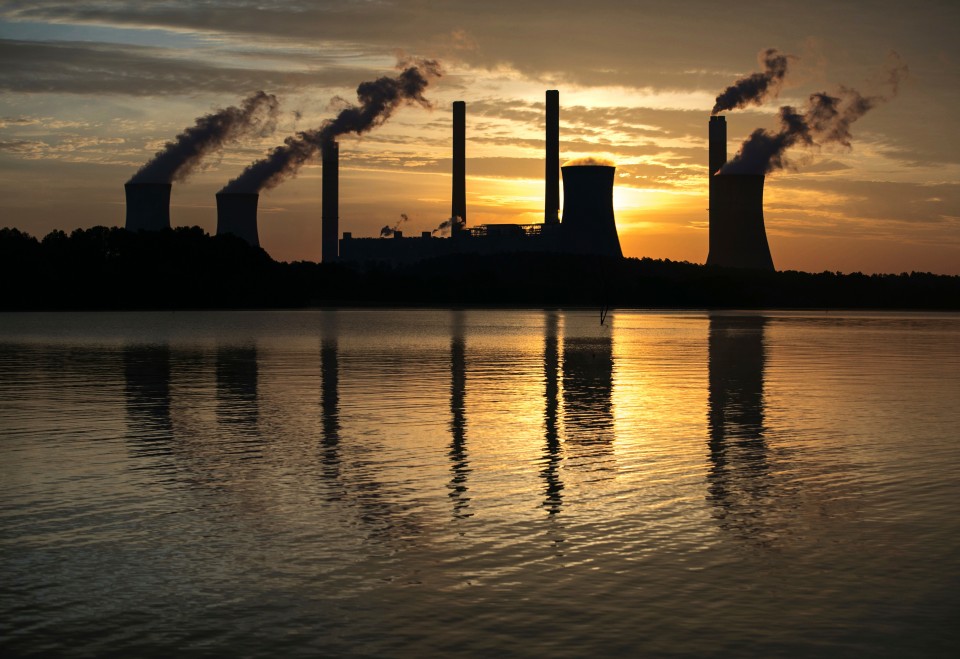Christiana Figueres was executive secretary of the U.N. Framework Convention on Climate Change from 2010 to 2016.
Climate change is here now, and it’s time to urgently ask ourselves: What kind of future do we want to work toward? The air we breathe is key to answering this question. Global warming is not just manifesting in devastating fires, floods and heatwaves; its causes are impacting nearly every breath we take.
A recent World Health Organization report said that nine out of 10 people on the planet breathe dangerous air, and an estimated 7 million premature deaths a year are caused by air pollution-related diseases, including stroke and heart disease, respiratory illness and cancer. A recent Health Effects report reiterated these statistics, saying more than 95 percent of the world population breathes bad air. Just a few weeks ago, another study showed that air pollution damages cognitive abilities.
Thick, heavy smog caused by the burning of fossil fuels and crops is choking cities around the world. China has been forced to close tens of thousands of factories to reduce its air pollution. Air pollution in Africa has been ruled responsible for more deaths than unsanitary water or malnutrition. Last November, Arvind Kejriwal, chief minister of India’s capital city, wrote: “Delhi has become a gas chamber.”
Pollution is not invisible — but it can be hard to see. The pollutants that give most cause for concern are toxic gases such as nitrogen dioxide, sulfur dioxide and particulate matter, or PM2.5. These gases come from car, truck and bus exhaust, the burning of fuels such as coal, oil, gas and petrol, as well as burning crop materials or naturally-occurring forest and grass fires. These particles are so small — a fraction of the size of the diameter of a human hair — that they are easily ingested deep into the lungs.
PM2.5 is now increasingly showing up in places like Europe and North America, partly due to wildfires. Studies have linked air pollution to about 40,000 deaths a year in the United Kingdom — with about 10,000 in London, partly due to the rise of diesel vehicles there. Meanwhile, wildfires are reversing decades of air quality improvements across wide swaths of the western United States.
The most vulnerable people are impacted the hardest. Fossil fuel combustion byproducts have been deemed one of the most serious threats to children’s health and global equality. Emerging evidence indicates that pollution from coal combustion and motor vehicles has been linked to development delays, reduced IQ and autism in children.
Carrying on along this trajectory is irresponsible and absolutely unacceptable.
But another trajectory is emerging as more people are standing up and campaigning for their inalienable right to clean air — and therefore, to life. On Wednesday in San Francisco, the Global Climate and Health Forum is bringing together 250 leaders from national and local governments, health systems, public health agencies, civil society and international health organizations to generate momentum and commitments for action on climate and health. We will use this moment, and others during this week’s Global Climate Action Summit, as an opportunity to call on mayors, governors, business leaders and investors — as well as heads of state — to help accelerate this action.
These calls are supported by the indisputable fact that addressing the causes of air pollution — made more feasible thanks to the exponentially declining costs of renewables and nascent battery storage technology — results in immediate health benefits and helps preserve our future climate. For example, after eight coal and oil- fired power plants were retired in California, the rate of preterm births of mothers living nearby dropped within just one year.
In China, the health benefits of reducing power sector emissions in line with the Paris agreement could be up to nine times greater than the costs of implementation by 2050. The reduction of particulate pollution alone would lead to approximately 20,000 fewer deaths per year by 2030.
Driven in part by the demand for and the undeniable benefits of clean, breathable air, the paradigm in which development and economic growth depend on coal in particular is rapidly being replaced. The truth is that addressing global warming and its causes is now the only real way to secure economic growth. That means powering it with clean, everlasting, abundant alternatives. Governments everywhere can reap enormous benefits, including saving billions of dollars on health care, by fostering a shift to electric transport, eliminating fossil fuel subsidies and scaling ecosystem restoration, including of mangroves, peat bogs and forests.
Countries all around the world are committing to rapidly phasing out petrol and diesel vehicles. India just announced that at least 15 percent of the vehicles on its roads will be electric in five years. In July, Ireland became the first country in the world to have voted to fully divest itself from fossil fuels. And just days ago, California passed legislation that ensures the state receive all of its power from renewable energy by 2045.
We know that a comprehensive response to climate change could be “the greatest global health opportunity of the 21st century.” The New Climate Economy report just out shows it will also deliver at least $26 trillion in economic gain over business as usual by 2030.
However, to do this within the window of time we have left to avoid the worst impacts of climate change, we must act with boldness and unprecedented urgency. There is no time to lose. Every breath matters.
This was produced by The WorldPost, a partnership of the Berggruen Institute and The Washington Post.





